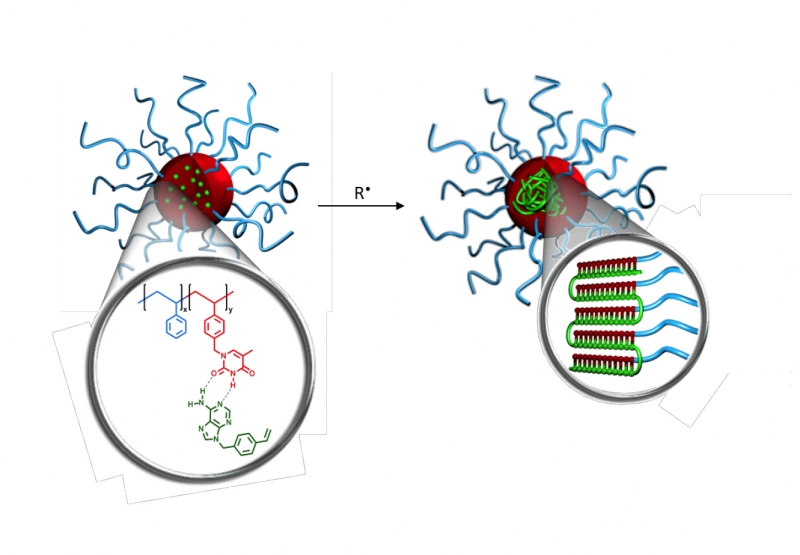Advancing coatings technology and polymer synthesis

Professor Per Zetterlund is an ARC Future Fellow and co-Director of the Centre for Advanced Macromolecular Design (CAMD) within UNSW Chemical Engineering.
Prof Per Zetterlund’s research efforts on the synthesis of polymers and polymeric nanoparticles are currently supported by an ARC Future Fellowship, an ARC Discovery Project and an ARC Linkage grant.
Prof Zetterlund was successful in obtaining an ARC Linkage Grant (Polymer nanoparticles with gradient morphology for environmentally friendly aqueous coatings applications) in collaboration
with Nuplex Industries. The overall aim of the project is to develop environmentally friendly, high-performance waterborne coatings that will replace currently employed solvent-based systems.
A solvent-based coating consists of a polymer (as well as pigments and other ingredients) dissolved in a volatile organic solvent, whereas a waterborne coating comprises polymeric nanoparticles dispersed in a continuous aqueous phase.
His group is developing novel methods to understand nanoparticle morphology, and to apply this understanding to improve a methodology that enables the synthesis of waterborne coatings that use less (or zero) environmentally harmful VOCs.
Prof Zetterlund is also involved in more fundamental research dealing with precision polymer synthesis. An ARC Discovery grant entitled Biomimetic templating radical polymerisation in nanoreactors (in collaboration with Prof Rachel O’Reilly (Warwick University, UK, and Dr Stuart Thickett, University of Tasmania) will allow Prof Zetterlund to contribute to one of the long-standing goals in polymer chemistry, namely to synthesise a (co)polymer with a perfect tailor-made structure in terms of molecular weight, molecular weight distribution, and monomer sequence distribution (order of monomers along the chain).
The aim of this project is to develop methodology to synthesise a polymer with hitherto inaccessible control of the microstructure by free radical means, i.e. the molecular weight distribution and monomer sequences. Such a tailor-made structure will lead to numerous applications in materials science, nanotechnology and nanomedicine.

The team is working on developing methods based on a combination of the concepts of nanoreactors and templated radical polymerization. Polymerization in a nanoreactor – a tiny confined space of diameter typically less than 100 nm – enables one to influence and control the progression of a polymerization. Templating radical polymerization, as employed in this project, relies on monomer units binding via hydrogen bonding to a pre-prepared polymer (the template) – this essentially lines the monomer units up along the template, after which polymerization is initiated.
By combining these concepts and conducting templated radical polymerization in nanoreactors (more specifically, well-defined micelles), high levels of control of chain growth can potentially be achieved.
Find out more about Professor Per Zetterlund and his research.
Image: Graphic illustration of template radical polymerization in nanoreactors (self-assembled micelles)
